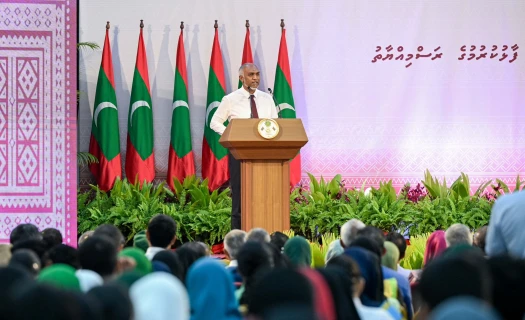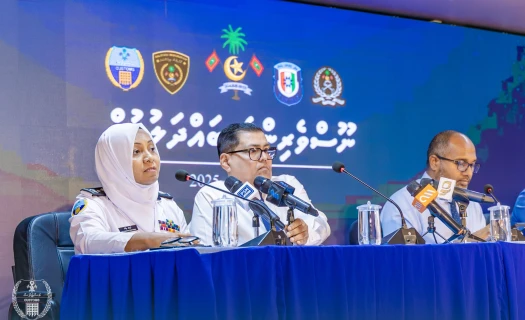Sun, 21 Dec 2025
|DHIVEHI
Safeguarding and nurturing children: A collective responsibility
11 May 2025
|

Photo: Shaari/UNICEF
Recent statistics from the Maldives Bureau of Statistics and the Ministry of Finance and Planning serve as a reminder of the nation's youngest generation and the immense responsibility shared by all to safeguard and nurture them.
Approximately 134,863 children aged 0 to 17 live across the islands, accounting for 21.8 per cent of the population.
While 53,769 children reside in the capital, Malé, a significant 77,385 are growing up in the outer islands, many of which are distant from the concentrated resources of the capital.
Education and school enrollment
Although the 2022 education data show that 91 per cent of children are engaged in some form of learning, this is marked by gender-based trends and regional disparities. In primary school, boys slightly outnumber girls, although this trend shifts significantly by higher secondary level, where more girls are compelled to remain in school.
School enrolment reached 99,300 children during the 2023/2024 academic year. Malé (37,463) vastly surpasses Haa Dhaalu Atoll (6,450), Addu City (5,343), Raa Atoll (4,865), and Laamu Atoll (4,020) – these figures indicate that hundreds of children continue to struggle for access to education under difficult circumstances.
Family living arrangements
Three-quarters of children were reported to be living with both parents in 2022. However, 22 per cent live with only one parent, and 2 per cent of Maldivian children live without either parent or guardian.
In Malé, this figure rises to a concerning 3.3 per cent. Behind each number is a child silently enduring: raised by grandparents, aunts and uncles, or, in the most vulnerable cases, essentially alone.
In addition, the quiet resilience of families caring for children with disabilities must be recognised. Around 4 per cent of children aged 5 to 17 (totalling 3,401) live with some form of disability. Assessing whether adequate safety nets and inclusive systems are in place for these most vulnerable children is essential.
Children not in education, employment or training
While some children undoubtedly thrive, a troubling proportion of teenagers are falling through the cracks of the social safety net. In 2022, approximately 16 per cent of children (around 17,651 individuals) were not engaged in education, employment, or training. The majority are aged between 15 and 17, with males comprising about 58 per cent of this neglected demographic.
Child labour
For older teenagers, child labour remains a harsh reality. Many 17-year-olds work in challenging sectors such as wholesale, retail, and vehicle repair (35 per cent), accommodation and food services (18 per cent), and public and community services (13 per cent).
Some children are learning trades with their hands before they have even closed their schoolbooks, perhaps compelled by circumstance to abandon their education. This underscores the urgent need to strengthen efforts to protect their childhoods and secure their futures.
Child protection cases
Ongoing child protection issues in the Maldives highlight areas still in urgent need of intervention. In 2023, out of 420 vehicle-related incidents, many involved unlicensed or expired drivers, suggesting a lack of supervision and accountability.
More distressingly, child protection cases continue to surface:
- 218 cases of sexual abuse
- 169 instances of physical abuse
- 57 cases of neglect
- 46 cases of verbal or psychological abuse
- 10 self-harm incidents
These cases, reported both in Malé and across the atolls, emphasise the need to enhance child protection measures regardless of location. Additional data reveal deeper, systemic vulnerabilities affecting children in these reported cases:
- 236 cases of sexual offences (188 girls and 58 boys)
- 95 incidents of family or domestic conflict (43 girls and 52 boys)
- 8 drug-related cases (7 girls and 1 boy)
- 86 cases of physical altercations or fights (18 girls and 68 boys)
- 201 miscellaneous or unclassified incidents (121 girls and 80 boys)
Each number represents a child, often unheard and unseen, whose trauma has been reduced to a statistic. The persistence of these issues demands reflection on whether current efforts are truly sufficient.
A shared responsibility
While the Maldives can point to progress in education and family stability, glaring gaps in child protection, equitable opportunities, and support systems remain undeniable. This is a call for decisive, sustained, and transformative action.
The question "Are we doing enough?" demands not just reflection, but immediate response.


Popular News







